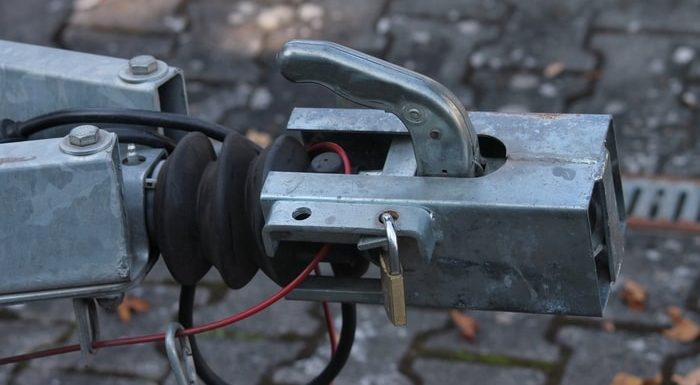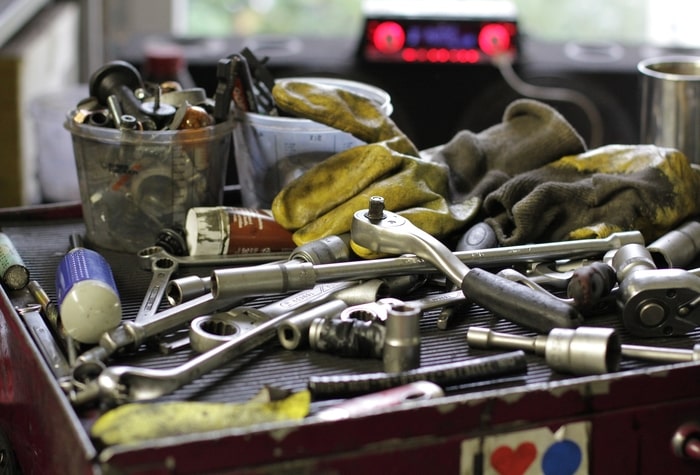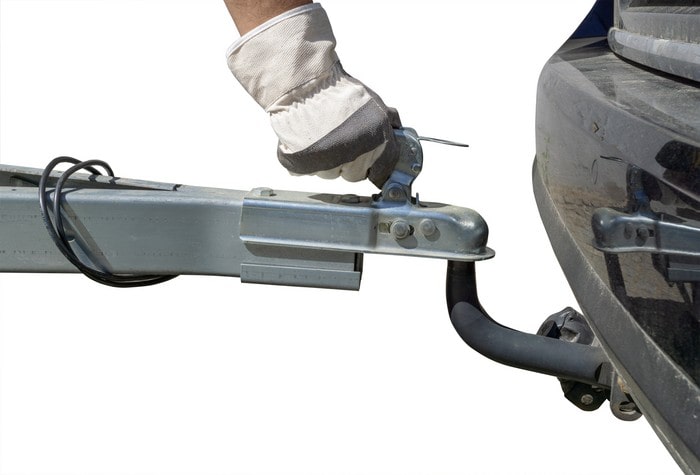
Towing a trailer is an advantageous and functional driving technique in various situations, including when travelling home, buying new furniture, transporting lawnmowers and ATVs, or towing boats and RVs. Knowing how to attach a trailer to a vehicle’s hitch successfully is just one step in the process of towing a trailer.
If you find it complicated to install a tow bar on a towing vehicle, we recommend that you ask a specialist to install it. But in case you have never installed a tow bar in the past, it is advisable to pay for professional services, which can also ensure that it is installed safely and securely.
And if you decide to work on your own, there are some steps you can follow to ensure that it is done correctly. The first step is preparing for the installation. Make sure you have the correct tow bar and recommended tools such as B. Ratchets and wrenches, to name a few.
In this article, we will try to cover some of the basic instructions of trailer hitch installed on your vehicle for a complete idea of how professionals do the installation.
Let’s get started.
Follow the Instructions from Vehicle User Manual
The first step in installing a hitch receiver is to read the instructions from the user manual. Familiarity with the installation procedure will give you confidence in your work and help you determine if you can perform the task. Improper installation of the towbar can lead to unexpected injury or death. Each of the vehicles has its own distinguishable features. For example, not all clutches are made the same. Therefore, if the clutch has unique features that you are familiar with, it is imperative that you do not have problems during or after installation. Make sure to carefully examine the installation instructions for your type of coupling to understand what you can expect at each stage of installation. Next, place a chock in front of the vehicle’s front tires and raise the rear wheels. And finally, make sure you have the proper lighting to see precisely what you are doing.
Understand the Types of Tow Hitches
There are many types of hitches, each designed for a particular citation type. Therefore, it is essential to choose the right one for the job you are thinking of. An example is the gooseneck hitch used to tow a gooseneck trailer that can handle heavier tasks.
A tow bar is mounted on a bumper that is easy to install and does not weigh too much. However, you are limited to what your bumper can support. A small RV trailer is ideal for this type of work.
The most common type of hitch is a receiver hitch with a tube attached to the vehicle’s frame. Then insert the coupling bracket into the support tube to secure it. The choice of the suitable model depends on how much you can transport in your vehicle. A class rating is given to indicate the weight it can handle. Compact cars are usually rated up to 2000 pounds, so a Class 1 hitch is appropriate.
Receiver hitches are divided into five classes according to towing capacity and receiver tube size. The higher the class number, the larger the capacity and the larger the receiver tube.
Class I Hitch: The Class I tow bar can handle a total trailer weight (GTW) of up to 2,000 pounds and a maximum nose weight of 200 pounds. This type of hitch is commonly used in small cars, pickups, or vans to facilitate towing.
Class II Hitch: The Class 2 hitch can handle up to 3,500 pounds in GTW and the maximum weight of the tongue is 300 pounds. This type of hitch is commonly used in full-size vans, full-size pickup trucks, and SUVs to tow small boat, snowmobile, motorcycle, or RV trailers.
Class III Hitch: The Class 3 hitch can handle up to 5,000 pounds of GTW and the maximum weight of the tongue is 500 pounds. This standard type of hitch is intended for general towing.
Class IV Hitch: The Class 4 hitch can handle up to 10,000 pounds of GTW and the maximum weight of the tongue is 2,000 pounds. This type of hitch is usually a weight-distribution hitch.
Class V Hitch: Class 5 hitch can handle GTW over 10,000 pounds and the maximum weight of the tongue is around 1,200 pounds. This hitch is a weight-distribution hitch commonly used for hefty loads such as cars, horse trailers, large boats and RVs.
Get Your Vehicle Ready

Many drivers mistakenly believe that towbars are dedicated to heavy-duty trucks and SUVs. However, even small cars often have a specific traction capacity. Consider referring to the instruction manual of the vehicle for the towing capacity. You may not be able to tow a full trailer, but your car can probably pull a smaller cargo trailer.
But caravan receiver hitch isn’t just about towing, especially in electric, hybrid and compact cars. Most commonly, towbars add a bike rack to a small vehicle. You can also find unique hitch attachments, such as hammock attachments and hidden vaults. Learn more about the benefits of small car towbars. As a rule, all vehicles have a receiver hitch. These systems are available from the smallest electric cars to the largest trucks. However, two unique situations can make it challenging to use the tow bar.
Old Car: The first consideration is whether your car is much older. Many older cars may still have a tow hitch installed, but an auto mechanic may need to inspect the vehicle’s frame to ensure that this installation is acceptable.
Frame Damage: The second consideration here is that it may not suit a hitch if the frame is damaged or heavily rusted.
Gather All the Tools and Equipment

The tow bar can be designed to fit the vehicle, but that doesn’t mean it doesn’t require any preparation or even minor changes. Also, the vehicle’s exhaust system may need to be adjusted slightly as the silencer and tailpipe can be hot.
So, forget what you guessed from the commercial. There is no substitute for the complete toolkit. Installing the trailer hitch isn’t one of the times when you have to be creative like MacGyver. Before you start, have the tools that you will need throughout the whole time.
If you don’t need anything for the instructions, get it. Therefore, save the tools you need to install the hitch before starting. These may vary depending on the particular hitch, but the hitch generally only requires some basic tools found in the average do-it-yourself toolbox. Tools used during towbar installation include: shop lights, socket sets, ratchets, ratchet extenders, swivel sockets, work gloves, safety glasses, torque wrenches, jacks and stands, pry rods, tape measures, trimming tools, screwdrivers, touch-up pens, die grinders, carbide drills, cutting lubricants, etc.
It’s always a good idea to have an extra light when working under the car, and it helps to refer to the installation instructions when installing. Position your lights to illuminate your workspace without disturbing your work. During this time, you can familiarize yourself with the various bolts, holes, and other components that will be accessible during installation.
Position the Hitch and Vehicle to Start the Installation

First, you need to check the front wheels. Depending on your specific problem or workplace, you may need to jack up your vehicle. Most towbar installations, including car hitch installations, do not require the car to be jacked up but provide additional in-vehicle space for work. Ensure the emergency brakes are on, the vehicle is at a safe height, and the jack stand is used to ensure that the vehicle is properly stable. For some receiver hitch installations, the rear spare tires stored under the car can get in the way when installing the hitch. If instructed, remove it and set it aside.
Some hitch installations require the removal of certain screws and rubber plugs to provide space for the hitch frame. Others will need to remove or trim small plates or heat shields. In addition, you may need to drill a hole in the frame. Once the vehicle and hardware are ready, you can place the hitch. Hitches can weigh up to 50 pounds and may need assistance at this point. This is especially important for truck hitches, as these are tend to be heavy. For hardware, all you usually need to do is tighten enough nuts and bolts to keep the hitch in place. All hitch bolts are in place, and you can tighten them with your fingers before proceeding. When all tow bolts are in place, pull them to the values specified in the installation procedure.
Final Words
If you are an avid outdoor person who enjoys boating and camping, towing a caravan is almost a necessary skill. Remember to practice trailer towing and give yourself enough time to improve your skills and build confidence.
Best of luck.
Author Bio:
Starc Maxwell is a freelance writer, social media marketer and independent blogger who writes about automotive parts, food, fashion, sustainability, technology, finance, and home improvement. Aspires to become a professional writer and make a difference in society and the world we live in. Writing articles and web content for more than four years. Currently promoting business sites like www.airsafehitchaustralia.com.au/
